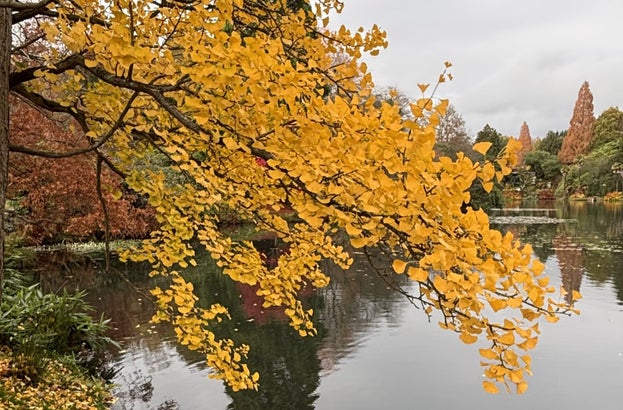10 November 2025
By Senior Gardener Steve
And in a flash, here we are. Autumn colour has officially ended at Sheffield Park and Garden. We have been treated to an incredible kaleidoscope of colours over the past six weeks for thousands of people to safely enjoy. Our staff and volunteers work incredibly hard to ensure that our site functions safely in order for everyone to enjoy the colours in their own special way.
Within the garden, we have a tree that indicates the start of autumn (Carya cordiformis by our entrance) and a tree that signals the end. The tree that signals the end is a wonderful Ginkgo biloba, the maidenhair tree, which you can find by Second Bridge. Like the C. cordiformis, the tree produces a brilliant buttery yellow canopy during November. Known has the Jurassic tree, the oldest recorded Ginkgo is over 3,500 years old. It is a living fossil native to China and one of the first tree species ever planted in the UK. It is an absolutely cracking tree - tough as old boots, brilliant for bonsai and excellent for urban environments. You can't go wrong with a Ginkgo! Any of the viewpoints mentioned on the previous blogs will provide you with a backdrop to enjoy the Ginkgo in its full glory. My personal favourite is from First Bridge between Ten Foot Pond and Middle Lake.
As for jobs in the garden, this week is Gunnera week. We cut the leaves off the Gunnera (as demonstrated by Maria, one of our lovely gardeners) and place them over the fleshy crown during the winter months so they are protected from frosts. We then give the beds a good weed. At the start of spring we will remove the leaves when new growth starts to appear. At Sheffield Park and Garden, we have Gunnera manicata (which is now believed to be hybrid) and Gunnera tinctoria both from South America. However, be warned, this exotic looking bog loving plant is now classed as an invasive species.
There is still plenty of colour around the garden for visitors to enjoy in the run up to December. The Liquidambars are still full of colour, our Acers are holding on and our Taxodiums are a beautiful bronze. If you can, make sure you check out our Nyssa sinensis which produces an almost peach like colour spreading across its large leaves.
Until next time autumn!














































